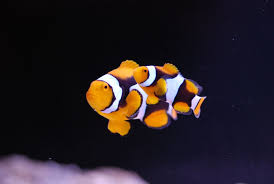Tea brewing is a delicate art, deeply influenced by multiple factors, with water temperature being one of the most crucial. The temperature at which tea is brewed directly impacts its flavor, aroma, and overall drinking experience. Brewing at the wrong temperature can result in a bitter, bland, or overly astringent tea. Understanding how water temperature interacts with fresh tea leaves allows tea lovers to unlock the best flavors and aromas from each type of tea.
The Science Behind Water Temperature and Tea Extraction
Water temperature affects how compounds in tea leaves dissolve and release their flavors. Different temperature ranges extract different components:
- Low temperatures (60-75°C / 140-167°F) extract sweet, delicate, and floral notes while minimizing bitterness.
- Medium temperatures (75-90°C / 167-194°F) bring out balanced flavors with slight astringency and complexity.
- High temperatures (90-100°C / 194-212°F) extract strong, bold, and tannic compounds, often leading to bitterness if not managed carefully.
Tea leaves contain a variety of chemical compounds that contribute to their taste and aroma, including:
- Catechins (antioxidants that give tea its astringency)
- Amino acids (such as L-theanine, which provides sweetness and umami)
- Tannins (which contribute to bitterness and body)
- Essential oils (which create floral and fruity aromas)
The extraction of these compounds is directly linked to the brewing temperature.
How Water Temperature Affects Different Types of Fresh Tea
1. Green Tea (70-80°C / 158-176°F)
Green tea is the most delicate variety, with high levels of catechins and amino acids.
- Too high temperature (above 80°C / 176°F): Extracts excessive tannins, making the tea taste bitter and harsh.
- Ideal temperature (70-80°C / 158-176°F): Balances sweetness and umami while keeping bitterness under control.
- Too low temperature (below 70°C / 158°F): Results in a weak, under-extracted tea with little aroma.
Example: Longjing (Dragon Well) tea, one of China’s most famous green teas, develops its signature chestnut-like aroma and sweet, mellow taste when brewed at the proper temperature.
2. White Tea (75-85°C / 167-185°F)
White tea is minimally processed and retains a delicate, floral profile.
- Too high temperature (above 90°C / 194°F): Destroys its subtle floral and honey-like notes, making it bitter.
- Ideal temperature (75-85°C / 167-185°F): Preserves its natural sweetness and smooth mouthfeel.
- Too low temperature (below 75°C / 167°F): Leads to an underwhelming and bland cup.
Example: Silver Needle white tea is best enjoyed when its light, sweet flavors are gently coaxed out with warm water rather than boiling water.
3. Oolong Tea (80-95°C / 176-203°F)
Oolong tea falls between green and black tea, with a range of oxidation levels.
- Light oolongs (80-85°C / 176-185°F): Reveal floral, creamy, and fruity notes.
- Dark oolongs (85-95°C / 185-203°F): Bring out roasted, caramelized, and nutty flavors.
Using too hot or too cool water can mute the complex flavors of oolong. Gongfu Cha brewing methods, which use small teapots and multiple short infusions, help regulate temperature and maximize taste.
4. Black Tea (90-100°C / 194-212°F)
Black tea is fully oxidized, requiring higher temperatures to extract its deep, bold flavors.
- Too high temperature (over 100°C / 212°F): Can make black tea overly tannic and astringent.
- Ideal temperature (90-100°C / 194-212°F): Brings out maltiness, spice, and caramel-like notes.
- Too low temperature (below 85°C / 185°F): Results in a weak and dull cup.
Example: Keemun black tea from China develops its full-bodied, wine-like complexity when brewed with nearly boiling water.
5. Pu-erh Tea (95-100°C / 203-212°F)
Pu-erh tea is a fermented tea that benefits from high temperatures to unlock its deep, earthy flavors.
- Raw Pu-erh (Sheng Pu-erh): Best brewed at 85-95°C (185-203°F) for a smooth taste.
- Ripe Pu-erh (Shou Pu-erh): Requires near-boiling water (95-100°C / 203-212°F) to extract its rich, dark, and woody flavors.
The Role of Temperature in Aroma Development
Tea’s aroma compounds are highly sensitive to temperature. Lower temperatures bring out fresh, floral, and vegetal aromas, while higher temperatures highlight roasted, woody, and earthy scents.
For example, Jasmine green tea releases its floral fragrance best at around 75°C (167°F), while Da Hong Pao (a roasted oolong) needs at least 90°C (194°F) to showcase its deep, toasted notes.
The Impact of Water Temperature on Astringency and Sweetness
Water temperature also controls astringency and sweetness in tea:
- Low temperatures extract more amino acids, enhancing sweetness and umami.
- High temperatures extract more tannins, increasing astringency and bitterness.
This explains why green tea tastes smooth at 75°C (167°F) but turns bitter at 90°C (194°F), while black tea needs boiling water to extract its full-bodied richness.
How to Control Water Temperature for the Perfect Brew
1. Use a Temperature-Controlled Kettle
Many electric kettles allow for precise temperature control, making it easy to brew different teas correctly.
2. Cooling Water Naturally
If you don’t have a thermometer, you can cool boiling water by letting it sit:
- Boiling water (100°C / 212°F) → Cool for 2 minutes → 85-90°C (185-194°F)
- Cool for 5 minutes → 75-80°C (167-176°F)
- Cool for 8 minutes → 65-70°C (149-158°F)
Alternatively, pouring water from a height cools it down faster.
3. Use the “Finger Test” (Traditional Chinese Method)
- If steam rises aggressively, the water is boiling (100°C / 212°F).
- If steam rises steadily but not forcefully, it’s around 85-90°C (185-194°F).
- If steam is barely visible and water is hot but not burning to the touch, it’s 75-80°C (167-176°F).
Conclusion
Water temperature is a critical factor in tea brewing, affecting flavor, aroma, and mouthfeel. Understanding how different temperatures extract different compounds allows tea enthusiasts to brew each type of tea to perfection. Whether enjoying a delicate green tea, a floral oolong, or a bold black tea, mastering water temperature elevates the tea-drinking experience and reveals the true essence of fresh tea.











